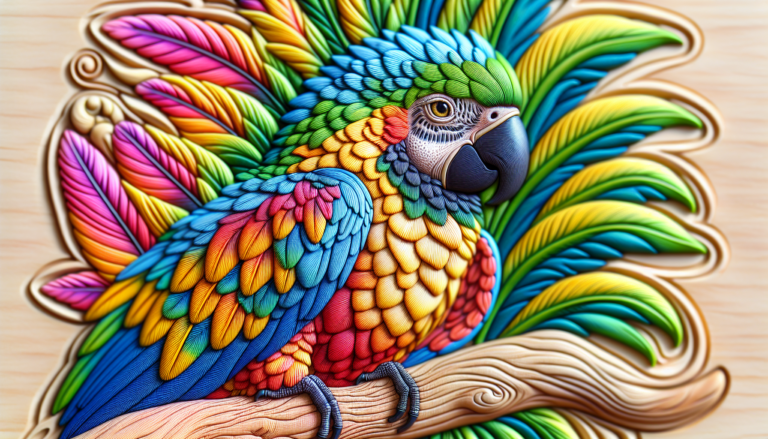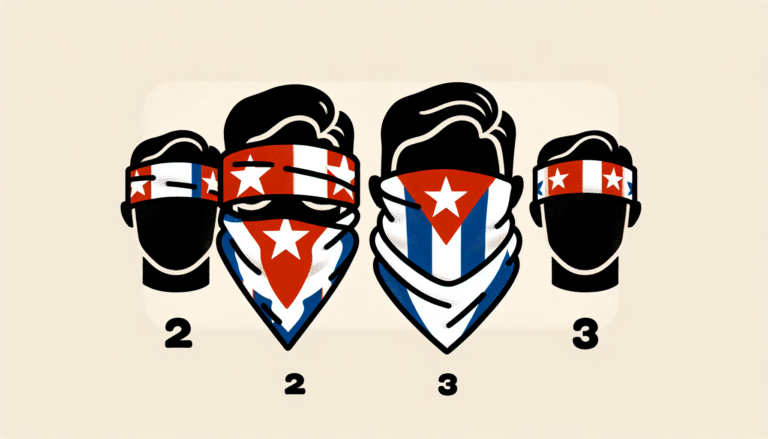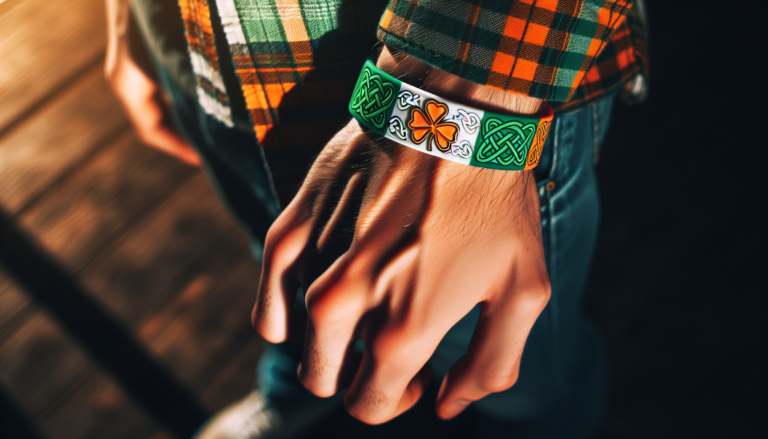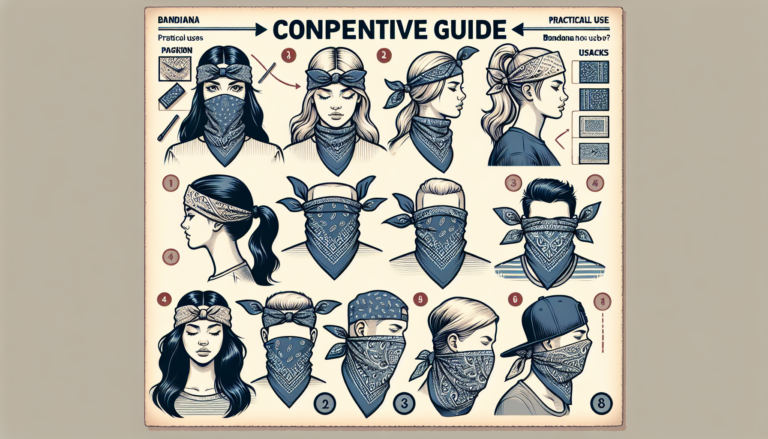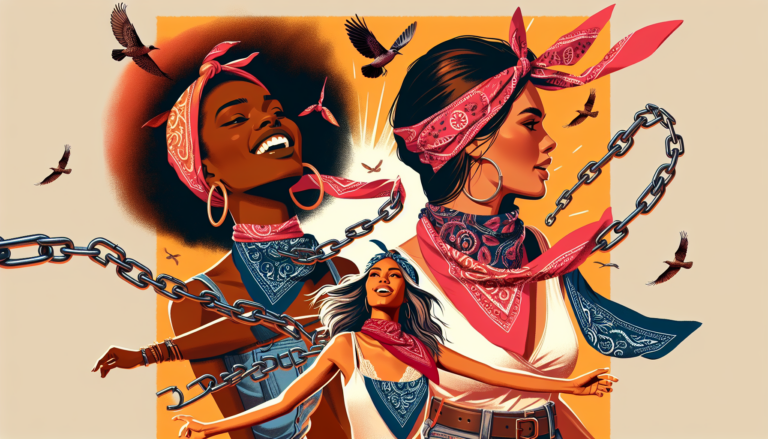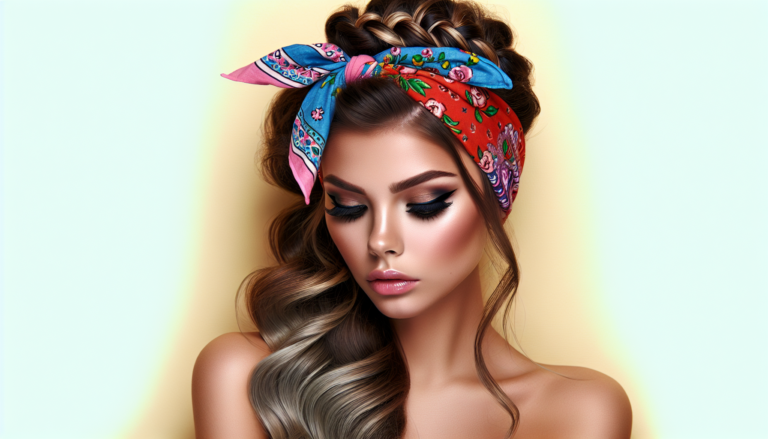In a previous post, we told you that bandanas are seeing a huge resurgence as must-have fashion accessories. In its 2022 trends report, the fashion giant Boohoo found that “cargo pants, wide-legged jeans, and bandanas were at the top of the come-back list. In fact, bandanas saw an increase in year-on-year online searches of a whopping 46%.”
We also showed you 5 cool ways for guys to wear bandanas. These covertly fashionable bandana styles are suitable for both casual and smart casual occasions and settings.
And then in another post, we offered some fun and easy bandana craft ideas because the bandana is eminently versatile. “There’s just so much you can do with bandanas – whether you want to use them, wear them, or make things out of them. The bandana’s primary attribute, versatility-from-simplicity, is what makes bandana craft projects both easy and fun. And the craft possibilities are nearly endless.”
But one thing is still missing . . .
And that is how to choose the right bandana for your specific needs.
Bandana Fabric

Let’s start with the fabric your bandana is made from. It is, of course, a personal choice, but you should consider when, where, and how you’ll wear the bandana.
The most common bandana fabric is cotton, but bandanas are also available in silk and satin. Generally speaking, cotton is suitable for everyday wear and all kinds of casual occasions like, say, a music festival. Silk and satin, on the other hand, are better suited for smart casual occasions, things like a date or maybe a meal out with friends.
The rule of thumb here is that the smarter and less formal the occasion, the richer the fabric you should choose. For everyday wear, though, cotton rules.
Color and Pattern/Print

After the fabric, the color and pattern/print are probably the next most important considerations. And a lot of it has to with what you’ll pair the bandana with, the clothes you want it to accent or complement.
Here are a few things to keep in mind in this regard when selecting your bandanas . . .
- Bright solid colors such as red, yellow, and orange – These go best with a neutral outfit or ensemble
- Neutral colors and shades – These are extremely versatile, but serve very well to tone done a very colorful outfit for a pleasant overall effect.
- Patterned bandanas – Patterned bandanas, such as the venerable paisley, also work very well with casual and neutral outfits like jeans and a T-shirt.
Bandana Quality

And, of course, you’ll want a quality bandana. But the trick lies in assessing and determining quality.
Certainly, you want it to look and feel like a quality bandana, but these are pretty subjective measures. There are, though, a few objective hallmarks of quality bandana construction.
One of these is the quality of stitching on the edges. The very top-of-the-line bandanas will have only a very slightly noticeable selvedge line on one or two edges, and those that aren’t selvedge will have folded and stitched edges.
Be sure to pay particular attention to the corners. Look for clean and precise stitching on the corners and the absence of anything that indicates hasty or shoddy stitching.
The way a bandana feels in your hand can also be a good indicator of quality. When you pick it up and rub it between your fingers and run it through your hand, does it feel soft and supple? If so, that’s a sign of a quality bandana. What you don’t want is a bandana that feels crisp or “papery.”
Printing and Patterns

Then for patterned bandanas, you should consider the printing and the method of printing. The most common bandana pattern is paisley (which traces its origins all the way back to ancient Persia) with its unmistakable teardrop designs. But bandanas come in a host of other patterns and prints, ranging from the popular camo to flag bandanas.
When it comes to patterned bandanas, the method by which the patterns and images were applied is a fairly important consideration. The most common ones are . . .
- Discharge printing uses a process that begins with a dyed piece of cloth and uses a color-destroying agent (chlorine, example) to bleach the desired pattern into (or, more precisely, out of) the original solid-colored piece of fabric.
- The screen printing process involves the use of a mesh stencil. The stencil is stretched over the (so-called) screen, and then ink is transferred onto the fabric to create the desired pattern or image.
- With resist dyeing, the cloth is treated with a special dye-resisting solution in the shape of the desired pattern. It is then dipped into the dye, and the solution-treated areas don’t react with the dye, which results in the pattern.
Durability and Washability

One thing people don’t want is a bandana that won’t stand up to use or washing. Of course, the bandana fabric will play a huge role in durability and washability, but let’s concentrate on cotton since that is by far the most common.
If you want your cotton bandana to stand up to repeated washings (which they will, no doubt, need if you use them or wear them very much at all), look for those that are colorfast. This colorfast quality simply means that there is a strong bond between the dye and the fibers of the fabric. The result is fade-resistance and colors that tend to retain their original hue with little to no fading or running.
If you select colorfast cotton bandanas, you’ll be able to just toss them washing machine many times over without having to worry about the color fading or running. (But if you have a bandana made from other fabric, you’ll likely have to be more careful with laundering.)
The deceptive Thread Count

A final consideration is thread count. It’s something some people are very concerned about and that others never think about. But it matters – and probably not in the way you think it does.
The common conception is that a higher thread count is better. The thinking goes that “all things being equal, higher thread counts require finer threads (the better to fit into a square inch), and the finer the threads you use, the softer, smoother, and more tightly woven (and thus, stronger) the fabric should be.”
But there’s a catch here, as evidenced in the arena of bedding and sheets . . .
In order to get the thread count higher (because many consumers consider that better and higher quality), many manufacturers “use multi-ply threads of lower-grade, shorter-staple cotton fibers twisted together. You get not only false strength but a rough, coarse feel (because the fibers tend to poke out of the weave) and less durability.
“When you look at it that way, a 400-thread-count sheet is a much better product than a 1,000-thread-count one. . . . It’s the thread that matters most. A sheet [or bandana] of a better-quality fiber with a lower thread count will feel softer and stand up to washing better than a sheet of a lower-quality fiber with a higher thread count. It will also let air flow through the weave, giving you superior breathability.”
And you definitely want your bandanas to possess breathability. An ideal thread count, then, for most bandanas is somewhere around 68×68.
Your Source for Quality, Affordable Bandanas
Now that you know how to shop for your bandanas, do you know where to get them?
Why not go to the bandana source that offers both quality bandanas and great prices coupled with superior customer service – Bandana.com?
Here at Bandana.com, we offer a wide selection of all kinds of headwear, including bucket hats, bandanas, and doo rags. You can get more information about us here.
If you are interested in more bandana information and tips, feel free to check out the link below!
